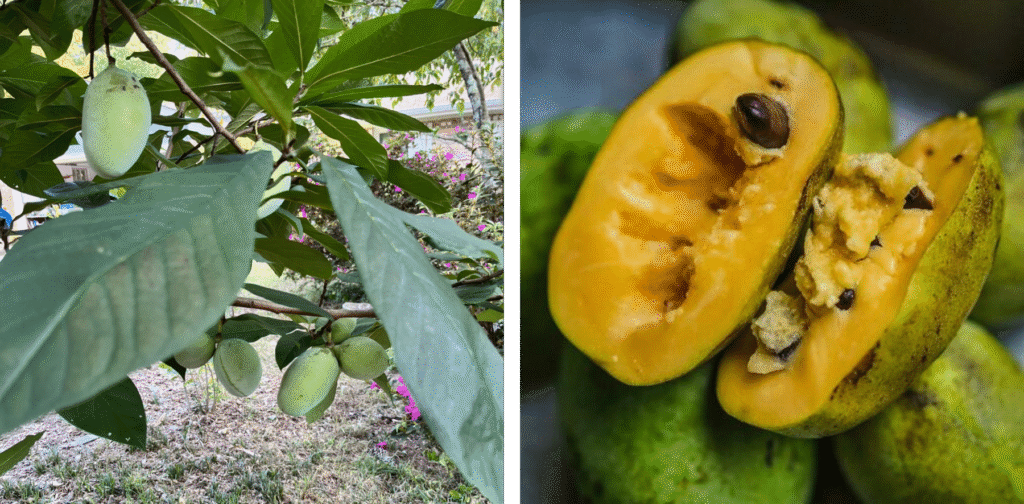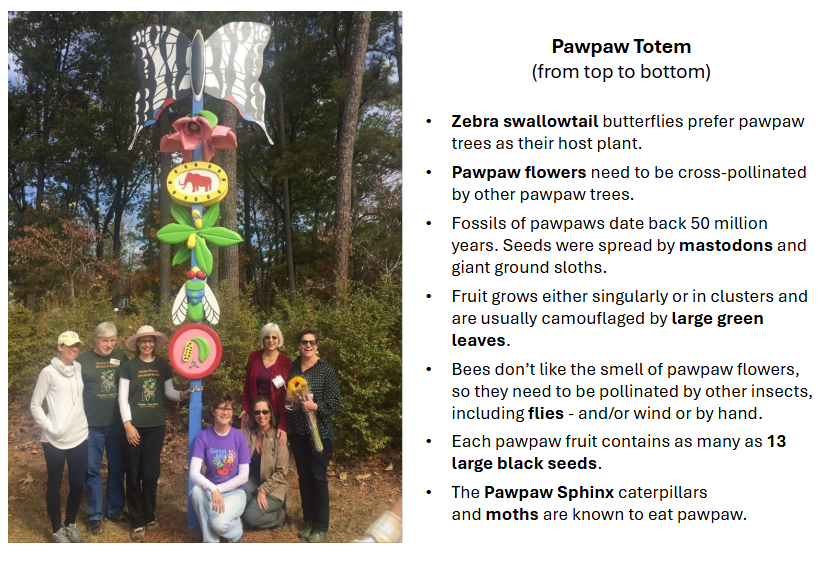Despite being the largest edible fruit indigenous to North America, pawpaw (Asimina triloba) has been vastly overlooked. This tree fruit species thrives in remarkably diverse climates and is capable of growing as far south as Florida, with northern limits extending into New England. Pawpaw is a nutrient-rich food source of great ecological value, perfectly suited to our native landscape, yet it has been vastly underutilized in modern planting practices.
Perishing within a few days post-harvest, pawpaw is best eaten freshly picked from the tree. However, its longevity can be extended through refrigeration, and it can be incorporated into baked goods – even serving as a banana replacement. The fruit’s unique flavor has been described as a cross between banana, mango, and pineapple. Custardy in texture, the fruit is long and oblong shaped with white flesh and rows of dark seeds. Only the flesh of the fruit is edible.
Although mature trees thrive in full sun, pawpaw is an understory tree – meaning young trees are light-sensitive and should be kept in partial shade. They are self-incompatible, meaning they require cross pollination from a genetically different tree to produce fruit. Trees tend to grow in clusters, although these are often clonal. Trees can easily be grown from seed or acquired from your local nursery.

Pawpaw fulfills much of what many Georgia growers are looking for: a low maintenance, ecologically important, tasty, native plant species to grow in their backyard. Pawpaw is resistant to diseases associated with most other tree fruits in Georgia, and compounds produced in their bark naturally deter deer. Additionally, incorporating pawpaw into your home and gardens helps support native ecological communities – these trees are the only host plant for zebra swallowtail butterflies.
For these reasons, Master Gardener Extension Volunteer Mike Fillon has proposed to the Tucker Mayor and City Council that pawpaw should become the official fruit tree of Tucker, GA. Multiple fruit-bearing trees can be found growing at Kelly Cofer Park, and a totem dedicated to the fruit can be found at Henderson Park.

Sources and further reading:
https://site.extension.uga.edu/forsyth/2021/04/landscape-worthy-native-tree/
https://extension.uga.edu/publications/detail.html?number=B992&title=minor-fruits-and-nuts-in-georgia#title14
https://bugwoodcloud.org/resource/files/27953.pdf
https://www.nps.gov/articles/pawpaw.htm
https://caldwell.ces.ncsu.edu/2017/09/native-pawpaw-tree/
Leave a Reply